‘It’s all about wonder and to look, to be able to ponder’ – the story behind spectacular nativity scenes
Each December, a newborn baby takes centre stage in Nativity scenes throughout the land. Julie Harding meets those responsible for bringing the Christmas story to life.
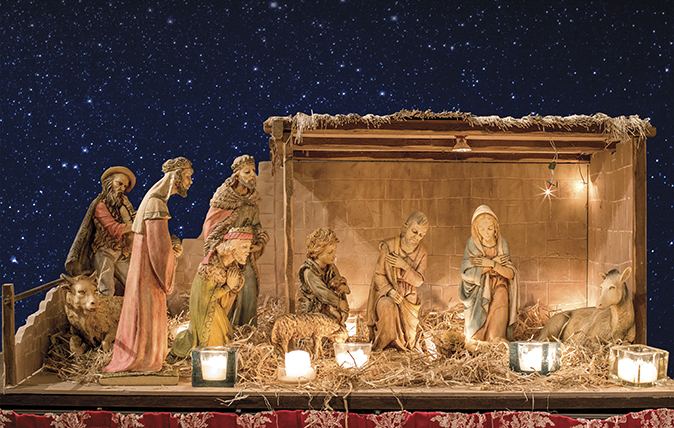

A small lantern throws a pool of light on the newborn baby at the centre of the crib scene. Several figures crowd around. Mary and Joseph kneel, as does Melchior, one of the Three Wise Men, with Caspar and Balthazar bowing in reverence. A young boy cuddling a lamb hangs his head. The serious expression of the elderly shepherd playing the flute helps to convey the gravity of the moment following the birth of Jesus Christ.
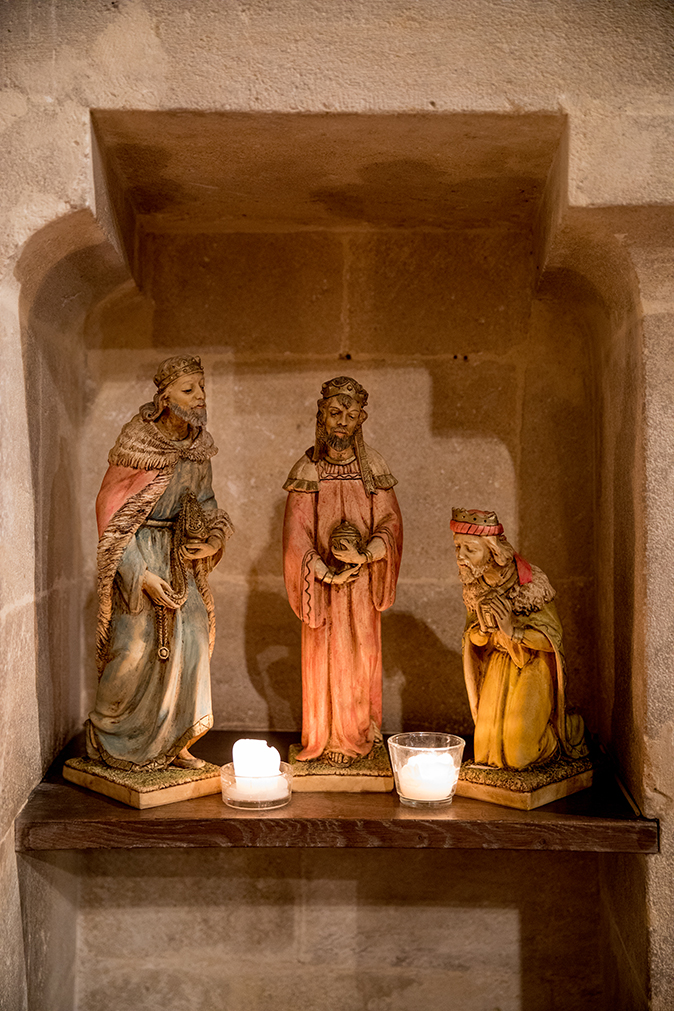
‘Our Nativity figures are particularly vivid and they bring the Christmas story to life,’ claims churchwarden Anne Dalgety as she gazes at the figurines in front of her, in the hushed nave of the 800-year-old Church of St Mary in Witham Friary, Somerset. ‘They’re so well crafted that you can see the Three Wise Men pondering the fact that this baby is the king of the world. You can sense that they’re feeling in awe of what’s ahead of them. Even the figures’ clothing represents who they are. The shepherd and the boy wear very simple things, as do Mary and Joseph, in contrast to the finery of the Three Wise Men.’
For a decade, George Pritchard, St Mary’s other churchwarden, has been taking the Italian-made figures out of storage in time for the evening carol service on the Sunday preceding Christmas Day. ‘I find setting it up very soothing,’ he admits. ‘I always make sure that the Babe is in everyone’s line of sight and I switch on the final, low-power lantern on Christmas Eve, which illuminates Him while the rest of the scene is subdued.’
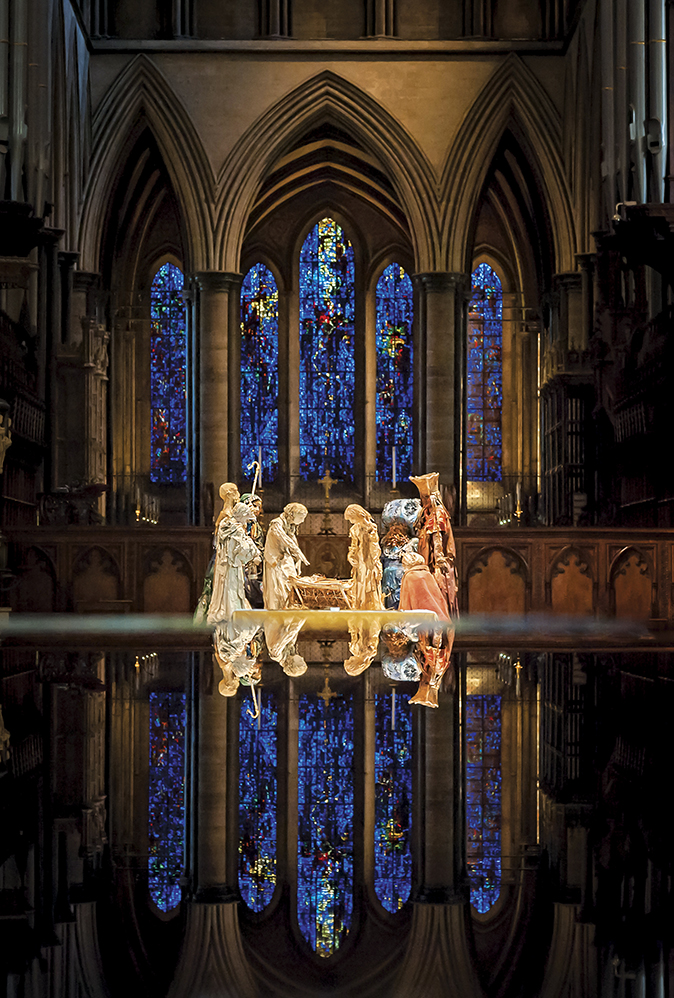
St Bonaventure, a Franciscan monk who wrote The Life of St Francis of Assisi in the 13th century, credits St Francis with creating the first Nativity tableau vivant. He mentions a simple scene of a live ox and ass standing alongside a hay-filled manger in a cave in Greccio, an Italian village, on Christmas Eve night in 1223. As he was planning the tableau, St Francis wrote to his friend, Giovanni da Vellita: ‘I would make a memorial of that Child who was born in Bethlehem, and in some sort behold with bodily eyes the hardships of His infant state, lying on hay in a manger, with the ox and the ass standing by.’
Although the tableau idea was embraced by the Catholic Church and spread rapidly around Southern Europe, England lived through the Reformation, which saw Protestants rejecting religious images as idolatrous and Christmas celebrations were banned during Oliver Cromwell’s rule. The Church of England is widely reported to have begun adopting crib scenes during the Victorian era, when cards, crackers, carols and Christmas trees became popular, yet medieval art historian Pamela Tudor-Craig, writing in the Church Times in the early 1990s, noted with surprise that she had found little evidence of their existence prior to the 1920s.
They have since grown in popularity, as demonstrated by the fact that 1,000 people visit Cribfest, run biannually in Grundisburgh, Suffolk, to celebrate Nativity cribs from around the world. Thousands of England’s parish churches, as well as those in urban settings, re-create the familiar story every December. They use cribs to represent the stable in Bethlehem and figurines as substitutes for the main players in this 2,000-year-old drama, even though theologians have long noted that the tableau is inaccurate and that the large assembled throng doesn’t appear together in the description of the birth in the Gospels of Luke and Matthew.
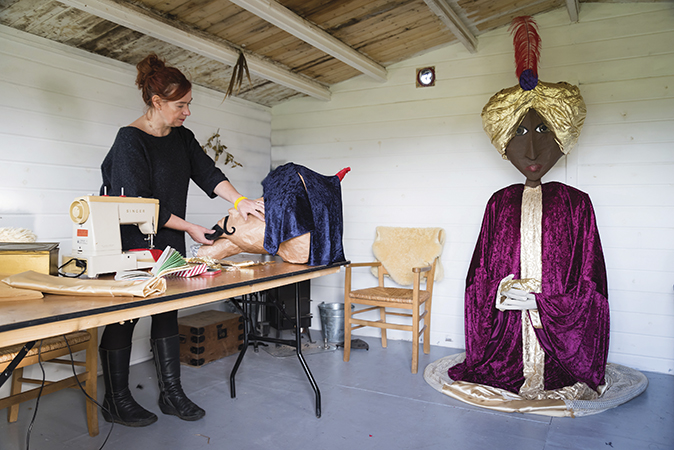
Accurate or not, the Holy Family takes centre stage until the Babe is added on Christmas Eve and the Wise Men appear at Epiphany. With no set precedent, the tableaus are as diverse as the cribs in which they are housed, moulded from a vast array of materials, from porcelain and paper to wood and wool and in sizes ranging from a few inches to larger than life, along with real-life ‘actors’.
Sign up for the Country Life Newsletter
Exquisite houses, the beauty of Nature, and how to get the most from your life, straight to your inbox.
‘Regardless of what the figures are made of, what I take away from the setting, with the Babe in the middle and the parents, the Wise Men, the shepherds and animals in concentric circles around him, is God making himself vulnerable at the centre of things. It says that he’s not coming like a powerful ruler,’ explains Ed Probert, acting dean of Salisbury Cathedral, where the Nativity figures, each moulded from paper by former Jackanory illustrator Peter Rush, stand at about 5ft tall.
Many Nativity sets boast their own hidden narrative. Witham Friary’s, in Somerset, for example, was dedicated in 1991 to the memory of Florence Cunnington, former headmistress of the village school. The set that belongs to Suffolk’s united benefice of St Peter’s in Great Livermere, St Peter’s in Ingham and St Bartholomew’s in Ampton was handcrafted out of yew by local sculptor Mary Anstee-Parry to mark the millennium and the 2,000th anniversary of Christ’s birth.
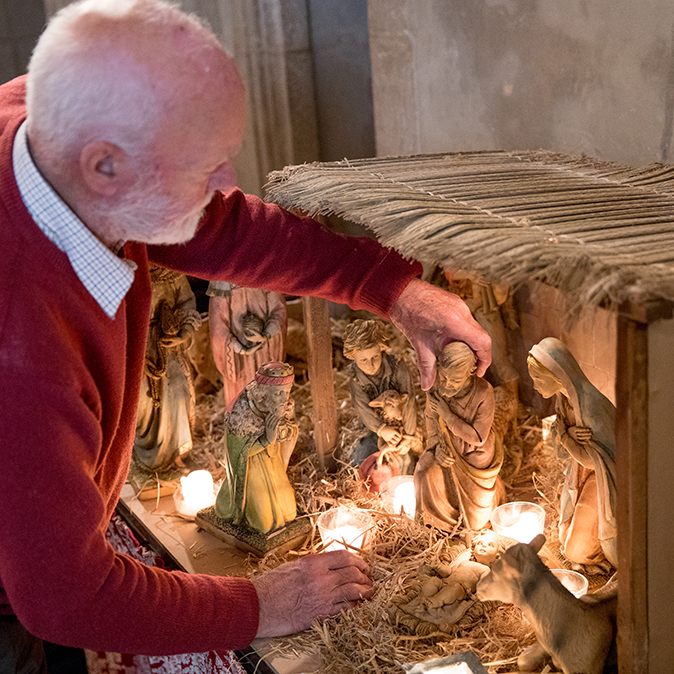
Mrs Anstee-Parry was given carte blanche in design terms and the end result is figures with Oriental features. The Wise Men/Kings are tall and lithe. Two shepherds, holding thick, rustic staffs, tower above the assembled crowd, but one is portly and is apparently modelled on Mrs Anstee-Parry’s husband, Dick. Mary, who boasts a long plait down her back, is kneeling and holding a basket containing the baby.
The wooden group is passed around the trio of churches and perched on the altar at Ingham, on a stand on the pulpit at Great Livermere and next to the organ at Ampton for the variety of festive services. ‘We encourage people to pick up the figures when the proceedings are over. The yew wood is very tactile and benefits from being handled,’ explains Margaret Hartley, the churchwarden who unpacks and packs the set more than half a dozen times between Advent and Epiphany. ‘In 1999, we decided that we wanted something to treasure. Many churches put in stained-glass windows, but we had never had a crib set and now we’ve got something unique, special and beautiful.’
Last year, Rev David Lawson invested more than £1,600 of church funds in a 14-figure Nativity set, from church supplier Vanpoulles, for the 13th-century All Saints’ Church in Kings Langley, Hertfordshire. ‘Our old set was worn and past its sell-by date,’ he discloses. ‘When we were deciding what to buy, we were working at drafting a new form of service in which local children carry the figures to the empty crib. We wanted as many to be involved as possible, hence the large number of figures.’
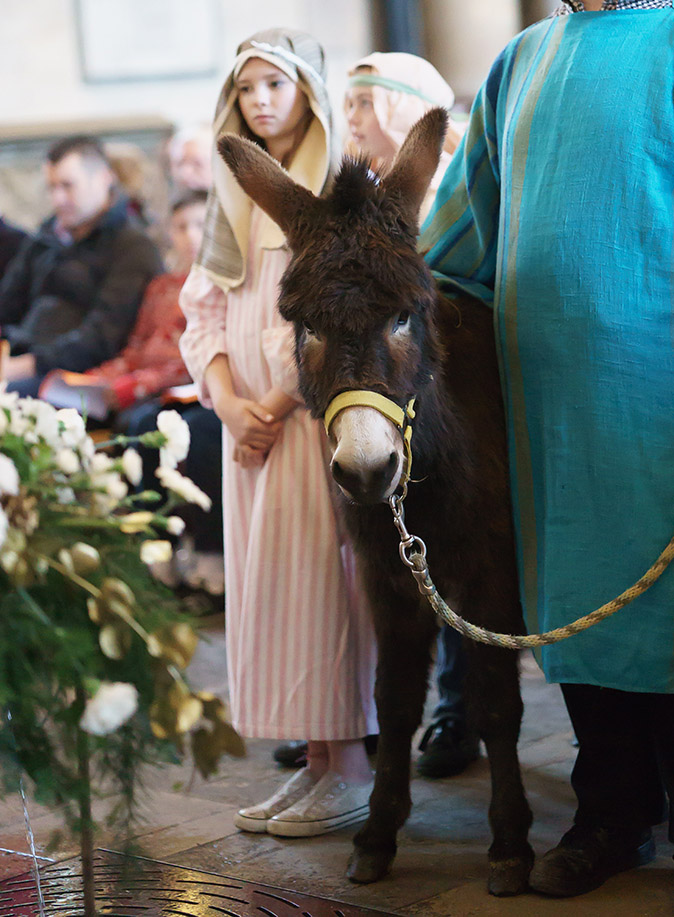
The All Saints set includes a gold-winged angel wearing a teal-coloured gown, three kings sporting shiny crowns and red, pale-crimson and blue-sapphire cloaks, plus a shepherd wearing blood-orange breeches. ‘When the figures first arrived, I was struck by their vibrant colours, especially compared to our old set, which was dark and dull,’ enthuses Rev Lawson, who’s constantly reminding his congregation of the true meaning of Christmas. ‘A lot of people think it’s about a baby, but at the heart of the story is the staggering and inexplicable mystery of a god who is invisible, but who is made visible in an infant child.
‘It’s all about wonder and to look, to be able to ponder. That’s why, at the end of every service, I invite people to walk past the crib, so that they can look and see something wonderful.’
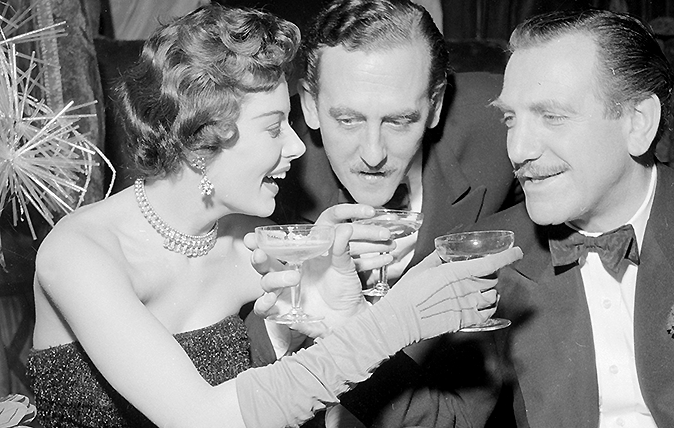
Credit: Trinity Mirror / Mirrorpix / Alamy Stock Photo
Nine unforgettable things to serve at your Christmas party
From port and parmesan crisps to shot glasses hand-carved from rock salt, we've got all sorts of ideas to make
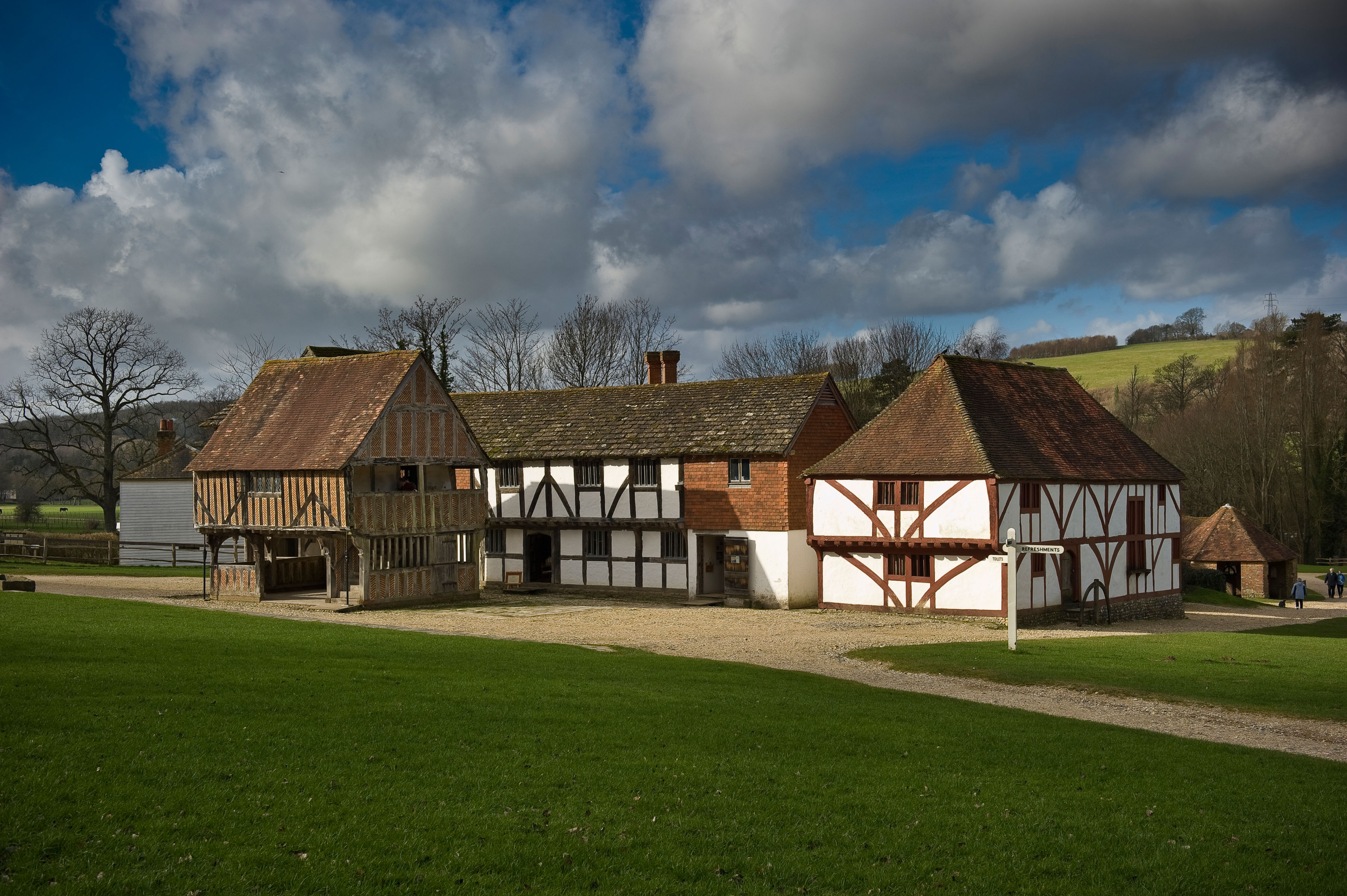
Things to do: Music in the gardens, the buildings of the Weald & Downland and a circus at the cathedral
Keep your diary up-to-date with our selection of unmissable events and things to do in the next few weeks.
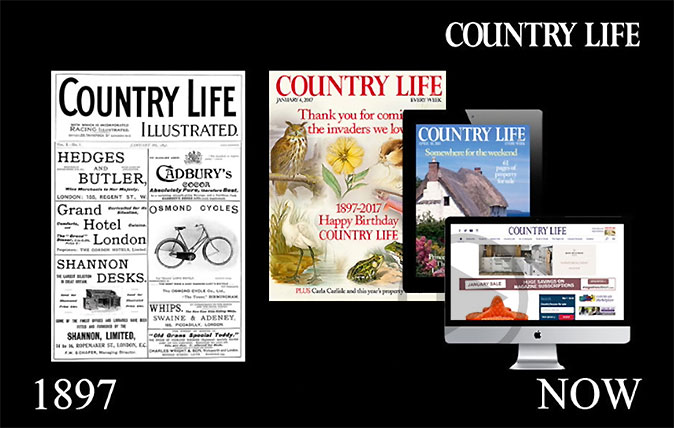
Credit: Country Life
VIDEO: How the world has changed in 120 years of Country Life
It's amazing how most things have changed... and how some things have remained the same.
Country Life is unlike any other magazine: the only glossy weekly on the newsstand and the only magazine that has been guest-edited by HRH The King not once, but twice. It is a celebration of modern rural life and all its diverse joys and pleasures — that was first published in Queen Victoria's Diamond Jubilee year. Our eclectic mixture of witty and informative content — from the most up-to-date property news and commentary and a coveted glimpse inside some of the UK's best houses and gardens, to gardening, the arts and interior design, written by experts in their field — still cannot be found in print or online, anywhere else.
-
 Two quick and easy seasonal asparagus recipes to try this Easter Weekend
Two quick and easy seasonal asparagus recipes to try this Easter WeekendAsparagus has royal roots — it was once a favourite of Madame de Pompadour.
By Melanie Johnson
-
 Sip tea and laugh at your neighbours in this seaside Norfolk home with a watchtower
Sip tea and laugh at your neighbours in this seaside Norfolk home with a watchtowerOn Cliff Hill in Gorleston, one home is taller than all the others. It could be yours.
By James Fisher
-
 The 2023 Country Life Editor's Christmas Quiz: The Answers
The 2023 Country Life Editor's Christmas Quiz: The AnswersAll the answers to Country Life's 2023 Christmas Quiz.
By Victoria Marston
-
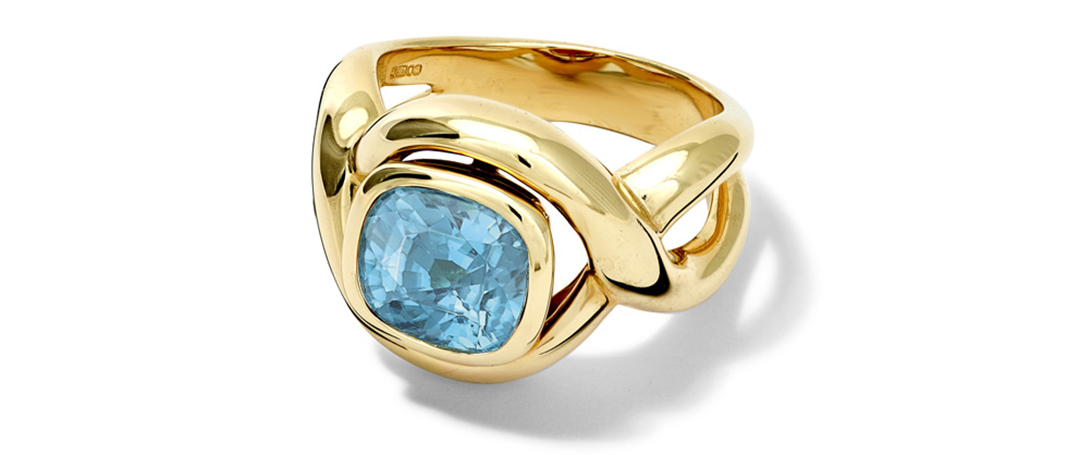 How to make Christmas jewellery shopping fun, with the wisdom and tips of Cassandra Goad
How to make Christmas jewellery shopping fun, with the wisdom and tips of Cassandra GoadChoosing the perfect present needn’t be a chore — in fact, it should be fun. Choosing jewellery from Cassandra Goad is a good place to start, and Country Life's Luxury Editor Hetty Lintell picks out some of her favourites.
By Cassandra Goad
-
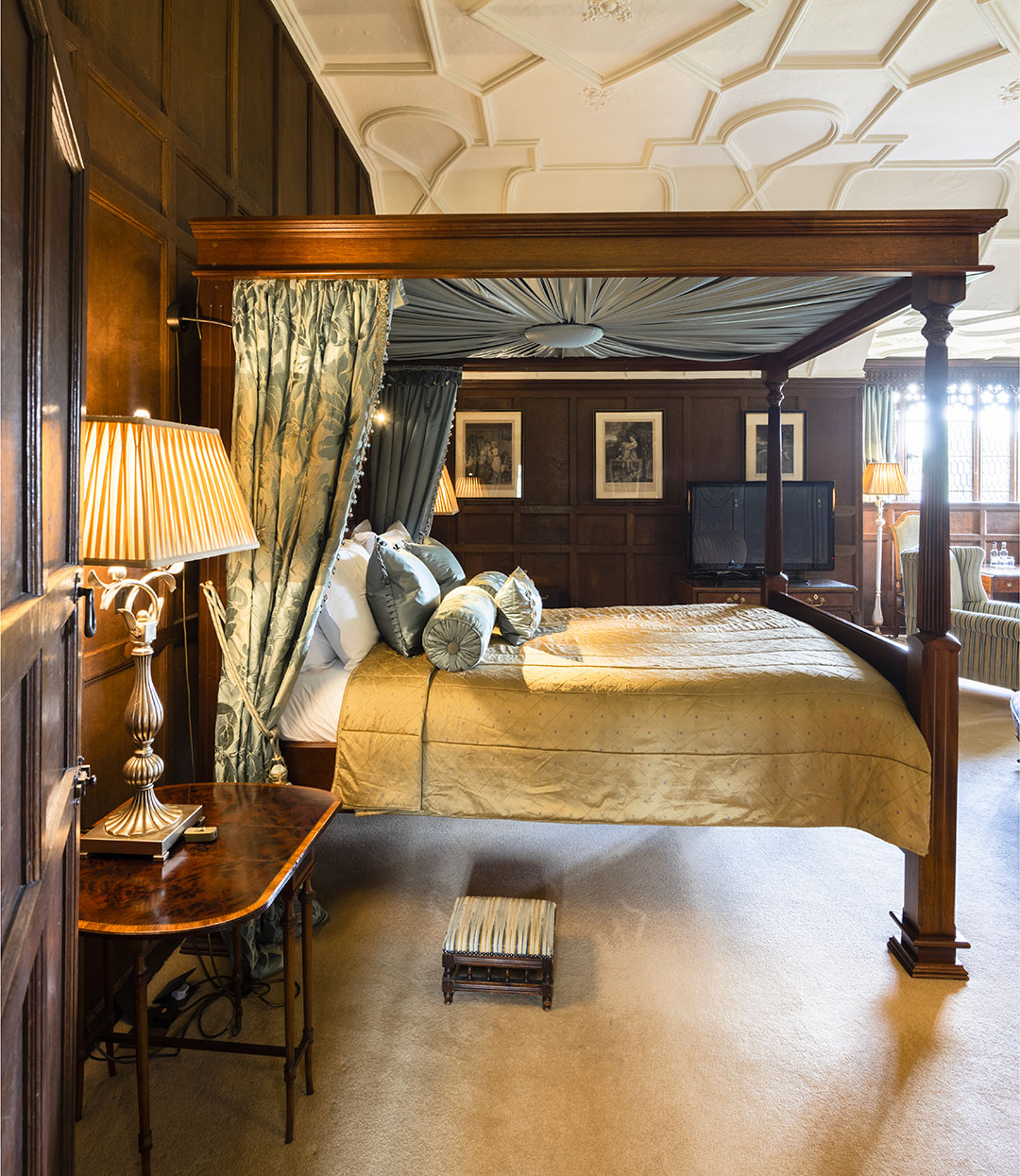 14 perfect Christmas gift ideas for the man or woman who has everything
14 perfect Christmas gift ideas for the man or woman who has everythingFrom beautiful books and artistic accessories to a weekend away in one of the country's most famous castles, these gifts from our carefully-selected partners offer options for everyone — no matter how tricky to buy for.
By Country Life
-
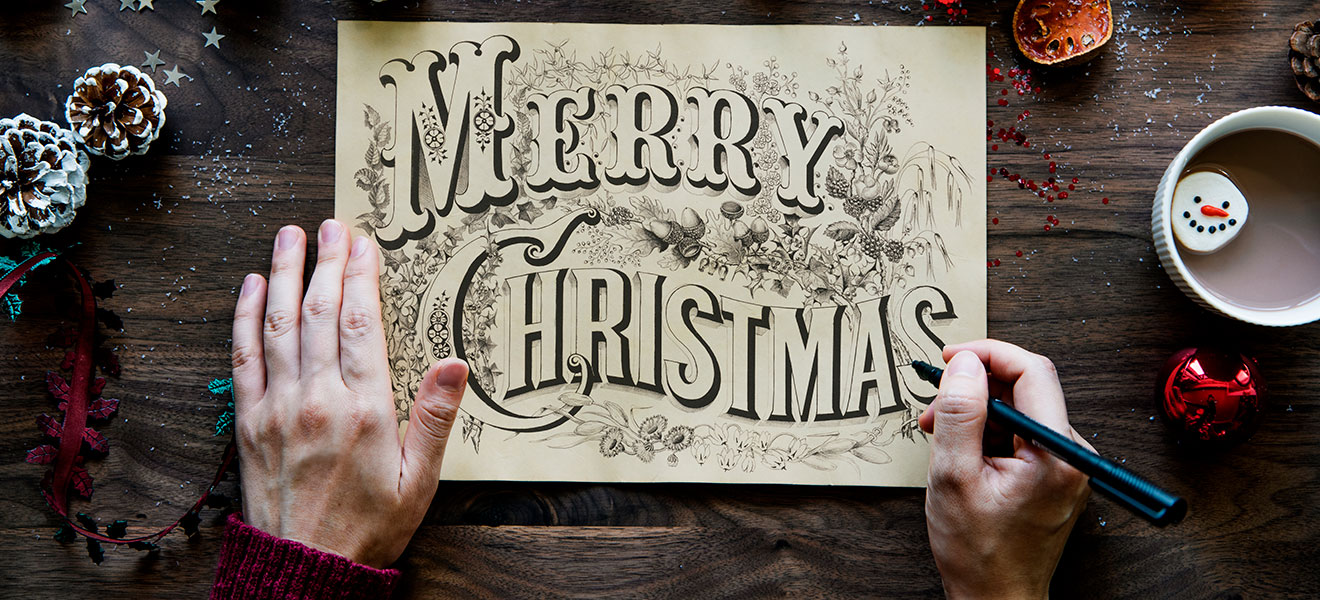 The Country Life Christmas message, by the Bishop of Gloucester: ‘The light shines in the darkness and the darkness of the present can never put it out’
The Country Life Christmas message, by the Bishop of Gloucester: ‘The light shines in the darkness and the darkness of the present can never put it out’The Rt Revd Rachel Treweek, Bishop of Gloucester, delivers our Christmas message this year, on embracing the hopes and fears of all the years.
By Toby Keel
-
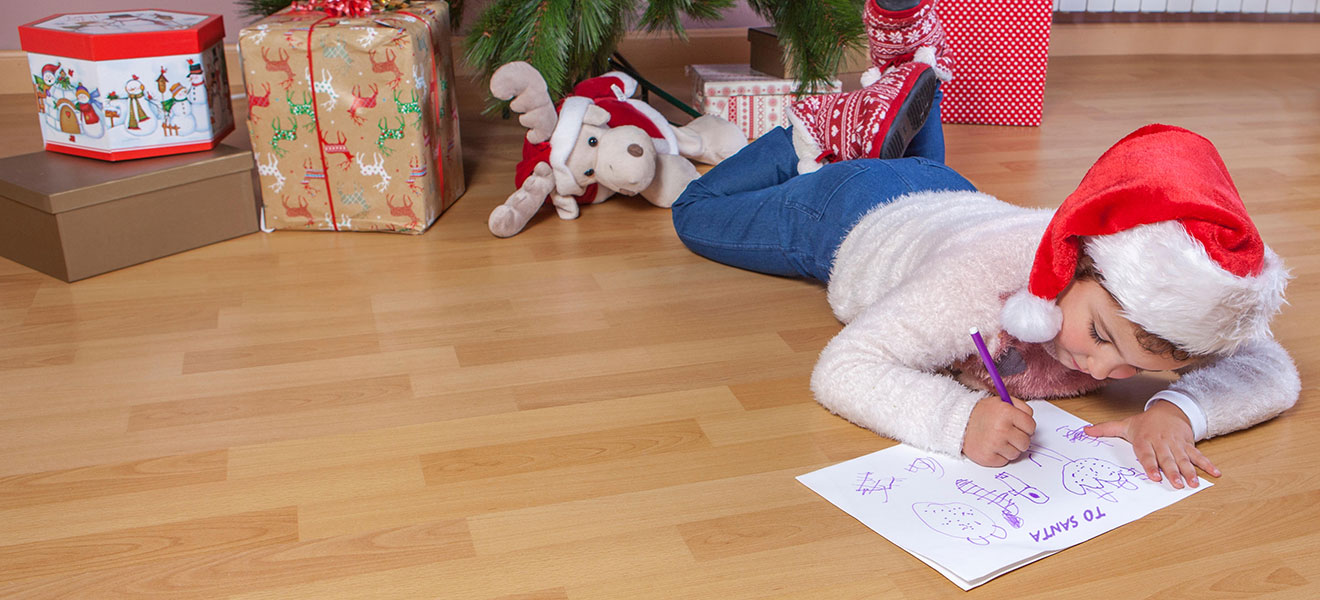 10 things you need to know about Operation Santa: How the Royal Mail helps Father Christmas reply to children across Britain
10 things you need to know about Operation Santa: How the Royal Mail helps Father Christmas reply to children across BritainFor over half a century, a secret room in a Belfast sorting office has housed a team of 'honorary elves' tasked with replying to the children who write Father Christmas to ask for everything from love to handlebar moustaches. Katy Birchall explains how it works.
By Katy Birchall
-
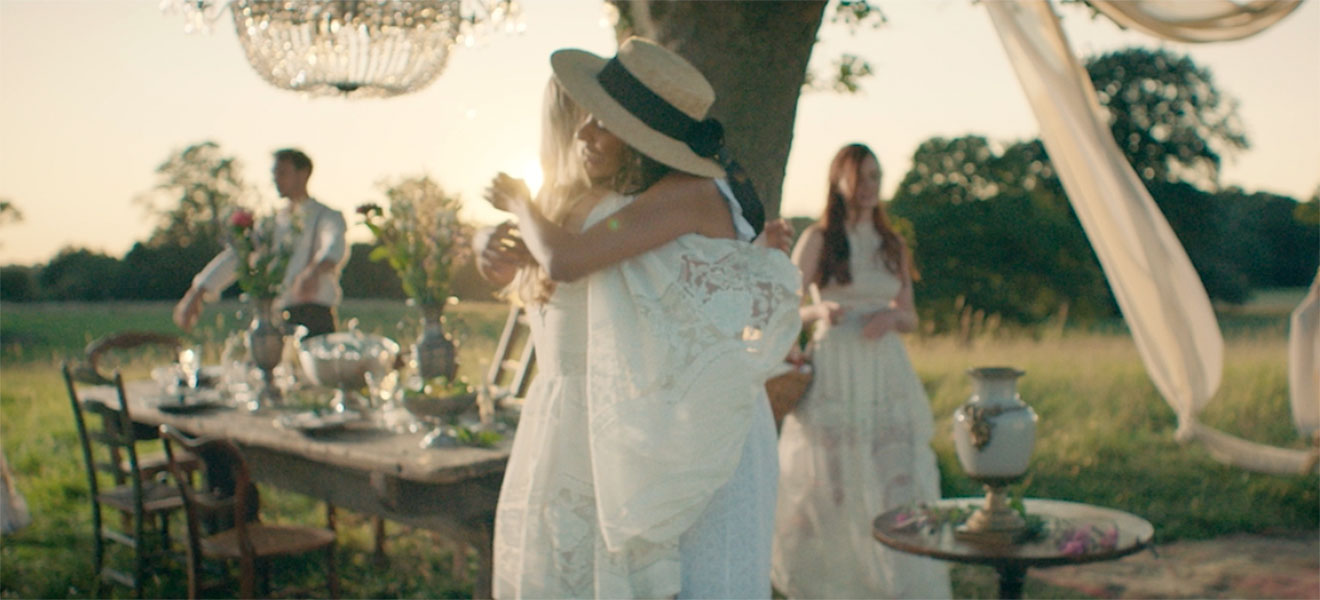 Pol Roger's 'Christmas' advert completely ignores everything to do with Christmas
Pol Roger's 'Christmas' advert completely ignores everything to do with ChristmasWatch the John Lewis Christmas advert, plus the best of the rest, in one place.
By Country Life
-
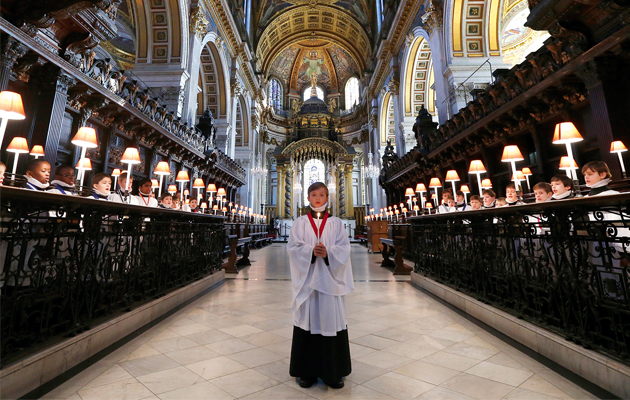 The best Christmas carol services
The best Christmas carol servicesThere will be heavenly music in cathedrals across the land this Christmas.
By Kate Green